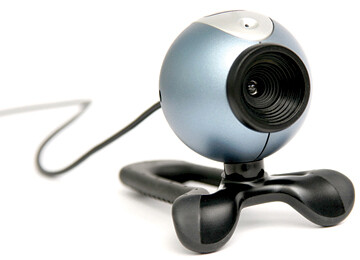
W.Va. hosts innovative charge conference
BY MELISSA LAUBER
UMCONNECTION STAFF
Bit by bit, byte by byte, United Methodist churches are entering the technological mainstream.
 A century ago, district superintendents traveled on horseback and in Model T Fords on country roads to pick up charge conference forms pastors had meticulously filled out each autumn with their fountain pens. Less than a decade ago, pastors began to fill out their charge conference forms on personal computers and nine district superintendents spent three months traveling to just under 100 churches each to collect the printed out forms in their large briefcases.
A century ago, district superintendents traveled on horseback and in Model T Fords on country roads to pick up charge conference forms pastors had meticulously filled out each autumn with their fountain pens. Less than a decade ago, pastors began to fill out their charge conference forms on personal computers and nine district superintendents spent three months traveling to just under 100 churches each to collect the printed out forms in their large briefcases.
This annual United Methodist ritual of charge conferences, in which local churches conduct the business that makes them part of the connectional denomination, has always been a significant undertaking.
But this year, on Oct. 28, First UMC in Berkeley Springs, W.Va., broke new ground when it connected online with its Adventure Guide, the Rev. Matt Poole, to conduct the Baltimore-Washington Conference's first electronic charge conference.
Gathered in the Rev. Andrew Cooney's study, the church's leaders spoke via computer to Poole, whose real-time image Cooney projected on a large wall.
The necessary forms had all been completed via Gateway, the conference's interactive database, used by each of the 680 churches in the conference.
However, Cooney and Poole's connection, via Microsoft Office Live Meeting software, was the first time Web cams captured the annual proceedings and allowed churches to connect via Web conferencing with the annual conference.
Cooney was no stranger to this technology. A year earlier, he and his wife "Web-cammed" themselves live from China into the church's Sunday morning worship service to introduce their adopted child.
Berkeley Springs members showed up at the charge conference the evening of Oct. 28, unaware they were making history. It didn't seem to phase them, Cooney said.
Poole spoke conversationally with the members, calling them by name and making everyone
comfortable.
Cooney believes this method of holding a meeting supports his congregation's theology of good stewardship of resources and the environment. Meeting in this manner, Poole did not have to make the 122-mile trip by car, saving $67 in travel expenses (which he noted was half the price of a good Web cam) and 2.5 hours of travel time.
"Our members were aware that was time he got to spend with his family, rather than being on the road" Cooney said. "That's important."
While the charge conference went off without a hitch, both Cooney and Poole said they would caution against using this method if a church was experiencing conflict that needed to be addressed, or if there were items on the agenda that went beyond "business as usual."
"It's not as easy to pick up people's body language," Poole explained.
Both of them say they will consider meeting like this again in the future and are hopeful that this will become more the norm for area churches and for other conference meetings.
The technology will just keep getting better, said Poole. "Only 635 churches to go that need to be equipped with Web cams."

Login/Register to leave comment